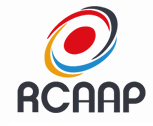Prevalência e fatores de risco para brucelose bovina no Estado de Pernambuco, Brasil
DOI:
https://doi.org/10.5433/1679-0359.2016v37n5Supl2p3413Palavras-chave:
Bovino, Brasil, Brucelose, Prevalência, Fatores de risco, Pernambuco, Brasil.Resumo
Realizou-se um estudo para caracterizar a situação epidemiológica da brucelose bovina no Estado de Pernambuco. O estado foi dividido em três circuitos pecuários e em cada um foram amostradas aleatoriamente cerca de 300 propriedades e, dentro dessas, foi escolhido, de forma aleatória, um número pré-estabelecido de animais, dos quais foi obtida uma amostra soro sanguíneo. No total, foram amostrados 3.901 animais, provenientes de 900 propriedades. Em cada propriedade amostrada foi aplicado um questionário epidemiológico para verificar o tipo de exploração e as práticas zootécnicas e sanitárias que poderiam estar associadas ao risco de infecção pela doença. O protocolo de testes utilizado foi o da triagem com o teste do antígeno acidificado tamponado (AAT) e o reteste dos positivos com o teste de Fixação de Complemento (FC). O rebanho foi considerado positivo, se pelo menos um animal foi reagente às duas provas sorológicas. As prevalências de focos e de animais infectados do Estado foram de 4,5% [3,2; 6,4%] e 1,4% [0,7; 2,7%], respectivamente. Os resultados para os circuitos pecuários da prevalência de focos e de animais infectados foram respectivamente: Zona da Mata, 3,3% [1,8; 6,1%] e 1,7% [0,5; 3,0%]; Agreste, 7,4% [4,9; 10,9%] e 1,9% [0,8; 3,0%] e Sertão, 1,3% [0,5; 3,5%] e 0,7% [0,0; 1,6%]. Os fatores de risco (odds ratio, OR) associado à condição de foco foram: presença de pastos alagados (OR = 2,86 [1,37; 6,42]) e a presença de 13 ou mais fêmeas no rebanho (terceiro quartil) (OR = 2,65 [1,19; 5,89]). A existência de assistência veterinária na propriedade foi considerado um fator de proteção contra a brucelose bovina no Estado de Pernambuco (OR = 0,24 [0,10; 0,58]).Downloads
Downloads
Publicado
Como Citar
Edição
Seção
Licença
Copyright (c) 2016 Semina: Ciências Agrárias

Este trabalho está licenciado sob uma licença Creative Commons Attribution-NonCommercial 4.0 International License.
Semina: Ciências Agrárias adota para suas publicações a licença CC-BY-NC, sendo os direitos autorais do autor, em casos de republicação recomendamos aos autores a indicação de primeira publicação nesta revista.
Esta licença permite copiar e redistribuir o material em qualquer meio ou formato, remixar, transformar e desenvolver o material, desde que não seja para fins comerciais. E deve-se atribuir o devido crédito ao criador.
As opiniões emitidas pelos autores dos artigos são de sua exclusiva responsabilidade.
A revista se reserva o direito de efetuar, nos originais, alterações de ordem normativa, ortográfica e gramatical, com vistas a manter o padrão culto da língua e a credibilidade do veículo. Respeitará, no entanto, o estilo de escrever dos autores. Alterações, correções ou sugestões de ordem conceitual serão encaminhadas aos autores, quando necessário.




















